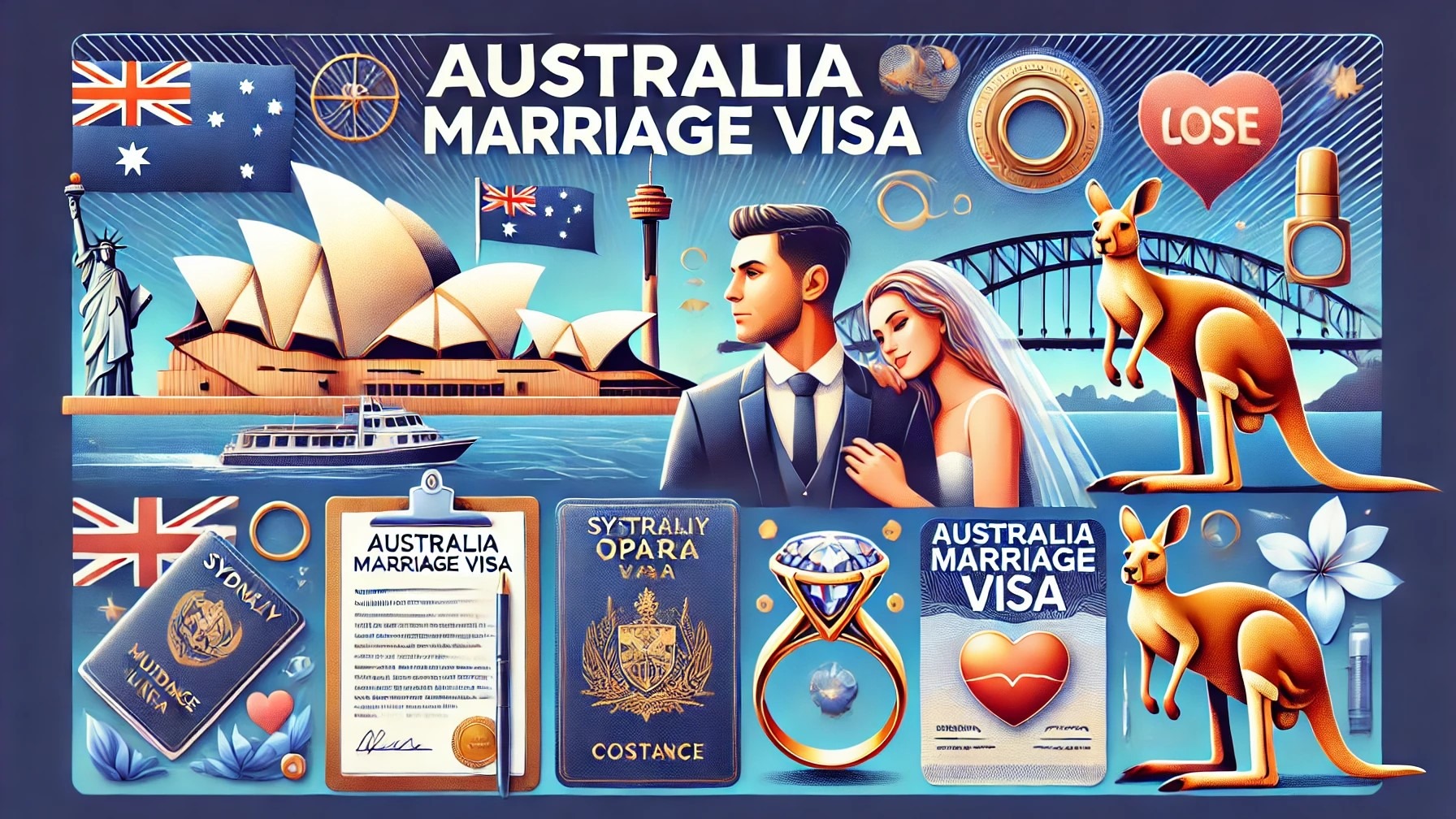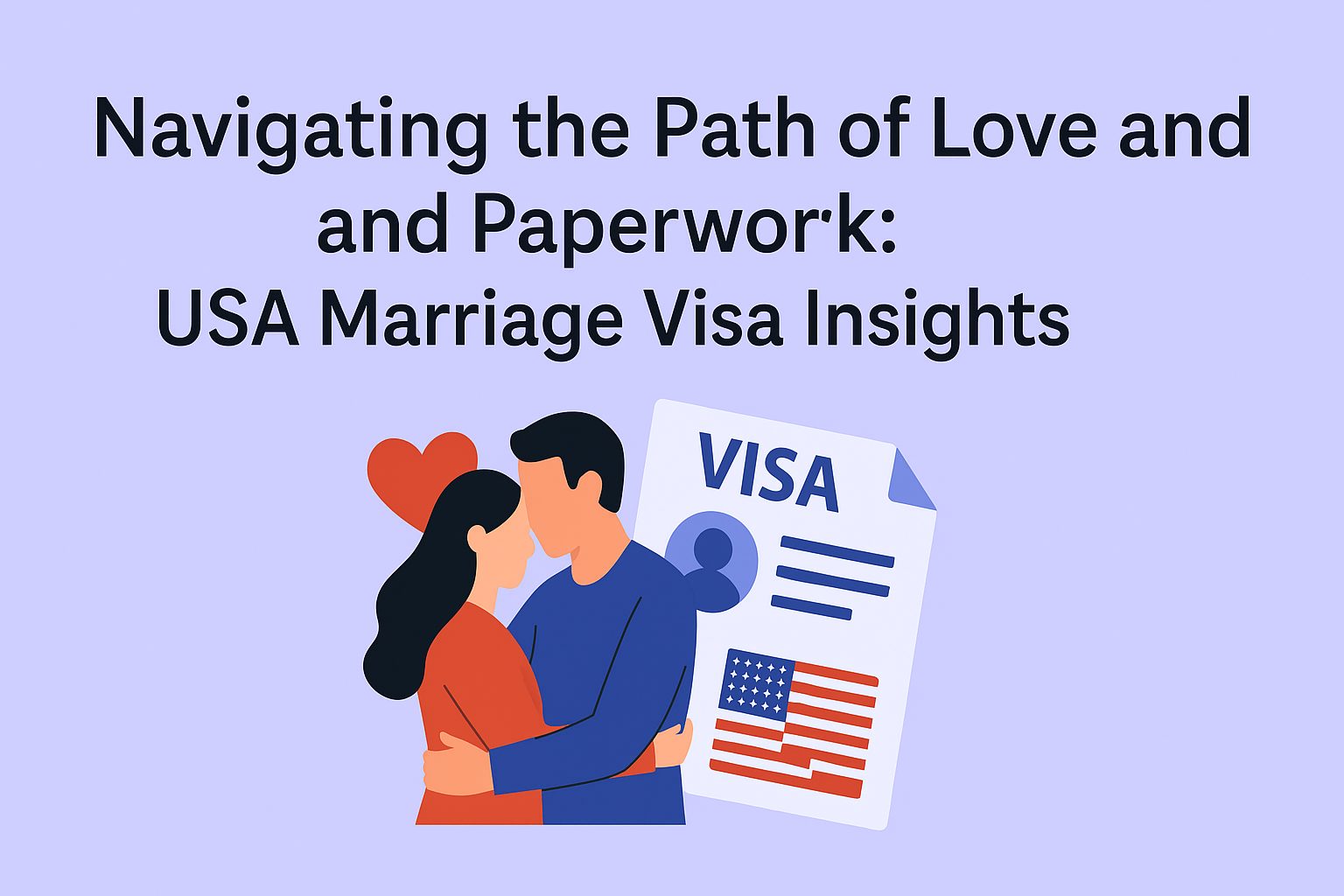Australia is a popular destination for couples seeking to build a life together, offering a range of visas to support family reunification and spousal relationships. The Australia Marriage Visa is specifically designed for individuals who are married to, or in a de facto relationship with, an Australian citizen, permanent resident, or eligible New Zealand citizen. This article provides a detailed overview of the types of marriage visas, eligibility criteria, application process, benefits, and common pitfalls.
Types of Marriage Visas in Australia
- Prospective Marriage Visa (Subclass 300)
- Also known as the Fiancé Visa, this visa is for those planning to marry an Australian citizen, permanent resident, or eligible New Zealand citizen.
- Valid for 9 to 15 months, allowing the applicant to enter Australia and marry their partner within the visa period.
- After marriage, the visa holder can apply for a Partner Visa.
- Partner Visa (Subclass 820/801)
- This visa is for individuals already married or in a de facto relationship.
- It is granted in two stages:
- Subclass 820 (Temporary Visa): Allows the applicant to live in Australia while their permanent Partner Visa is processed.
- Subclass 801 (Permanent Visa): Issued after the relationship is proven to be ongoing and genuine over two years.
- Partner Visa (Subclass 309/100)
- This visa is for applicants outside Australia.
- Like the Subclass 820/801, it is granted in two stages:
- Subclass 309 (Provisional Visa): Temporary residency.
- Subclass 100 (Permanent Visa): Granted upon satisfying relationship requirements.
Eligibility Criteria
- Relationship Requirements
- The couple must be married or in a de facto relationship for at least 12 months.
- The relationship should be genuine and continuing.
- Both partners must have mutual commitment and live together or intend to live together.
- Sponsor Requirements
- The sponsor must be an Australian citizen, permanent resident, or eligible New Zealand citizen.
- The sponsor should meet financial and character requirements.
- Health and Character Checks
- Applicants must undergo medical examinations and provide police clearance certificates.
- Age Requirements
- Both partners must be at least 18 years old.
Application Process
- Step 1: Gather Documents
- Identity Documents: Passport, birth certificate, and national ID.
- Relationship Evidence: Marriage certificate, joint bank accounts, property leases, photos, and communication records.
- Sponsor Documents: Proof of citizenship or permanent residency.
- Step 2: Submit an Online Application
- Applications must be lodged through the ImmiAccount portal on the Department of Home Affairs website.
- Step 3: Pay the Visa Fee
- The fee varies depending on the visa type but generally ranges from AUD 8,000 to AUD 8,850 for Partner Visas.
- Step 4: Attend Medical Exams and Provide Biometrics
- Applicants must complete health checks and submit biometric information.
- Step 5: Wait for Processing
- Processing times vary:
- Subclass 300: 12–15 months.
- Subclass 309: 12–18 months.
- Subclass 801: Two years from the date of the temporary visa grant.
- Processing times vary:
- Step 6: Receive a Decision
- Once approved, applicants will be granted their respective visa and can live in Australia.
Benefits of the Marriage Visa
- Work and Study Rights: Visa holders can work and study in Australia.
- Access to Medicare: Temporary Partner Visa holders gain access to Australia’s healthcare system.
- Pathway to Citizenship: After obtaining permanent residency, applicants can apply for Australian citizenship.
- Family Reunion: Applicants can include dependent children in their visa application.
Common Challenges and How to Avoid Them
- Incomplete Documentation
- Ensure all required documents are uploaded in the correct format.
- Relationship Proof
- Provide detailed evidence of a genuine relationship, such as joint financial commitments, travel history, and personal statements.
- Processing Delays
- Submit a complete application to avoid unnecessary delays.
- Visa Refusal
- Engage a registered migration agent for complex cases to minimize the risk of refusal.
Conclusion
The Australia Marriage Visa is an excellent pathway for couples to unite and build a future in one of the world’s most desirable countries. By understanding the eligibility criteria, preparing a thorough application, and seeking professional guidance if needed, applicants can navigate the process with confidence. Whether you are planning to marry or already in a committed relationship, this visa ensures that love transcends borders, enabling couples to thrive in Australia together.
For more details, visit the Australian Department of Home Affairs website or consult a migration agent specializing in spousal visas.



